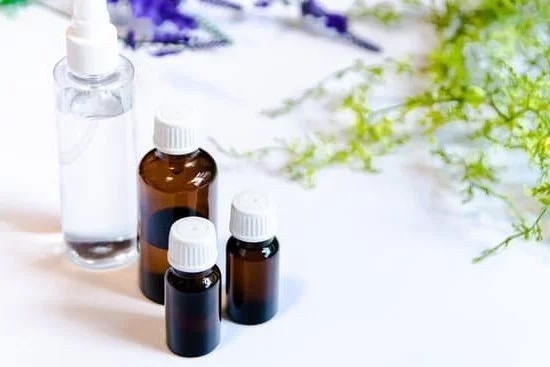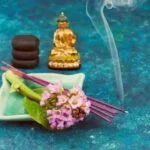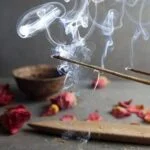Aromatherapy has gained popularity in recent years as a natural way to promote relaxation, alleviate stress, and improve overall well-being. Essential oils are at the core of aromatherapy, and understanding how to properly mix them is essential for achieving the desired therapeutic effects.
In this article, we will explore the basics of aromatherapy oils, different types of essential oils and their benefits, safety precautions, tips for proper mixing, popular blends for aromatherapy, and DIY recipes for stress relief, sleep, and focus. Whether you’re new to aromatherapy or looking to expand your knowledge, this guide will provide valuable insights on how to mix oils for aromatherapy effectively.
Aromatherapy utilizes the natural aromatic compounds found in plants to enhance physical and emotional well-being. Essential oils are extracted from various plant parts such as flowers, leaves, stems, bark, and roots through processes like distillation or cold-pressing. Each essential oil carries its own unique fragrance and therapeutic properties that can be used individually or blended together for a customized aromatherapy experience.
When it comes to mixing essential oils for aromatherapy, it’s important to have a good understanding of their individual characteristics and potential interactions. Some essential oils may complement each other while others may not be compatible when mixed together. Additionally, certain safety precautions need to be taken into consideration to ensure proper usage and minimize any potential adverse effects. Understanding the basics of essential oils is crucial for creating safe and effective blends that cater to specific wellness needs.
Understanding the Basics of Aromatherapy Oils
Aromatherapy oils are essential oils that are highly concentrated extracts from various plants and botanicals. These oils have been used for centuries for their therapeutic and healing properties. When using aromatherapy oils, it is important to understand the basics of how to properly mix them in order to maximize their benefits.
One of the most important things to consider when mixing oils for aromatherapy is dilution. Essential oils are extremely potent and should never be applied directly to the skin without being diluted with a carrier oil, such as almond oil or coconut oil. The typical dilution ratio for aromatherapy is 2-3 drops of essential oil per teaspoon of carrier oil for topical application.
In addition to proper dilution, understanding the properties of each essential oil is crucial in creating effective blends for aromatherapy. Different essential oils have different therapeutic benefits, such as calming, energizing, or uplifting properties. By combining oils with complementary properties, you can create customized blends that target specific issues or ailments.
When mixing oils for aromatherapy, it’s also important to take into account the individual’s preferences and sensitivities. Some people may have allergies or sensitivities to certain essential oils, so it’s important to do a patch test before using any new blend. It’s also important to consider personal scent preferences when creating custom blends for aromatherapy.
| Essential Oil | Therapeutic Benefit |
|---|---|
| Lavender | Calming and Relaxing |
| Peppermint | Energizing and Invigorating |
| Bergamot | Uplifting and Stress-Relieving |
| Eucalyptus | Congestion Relief and Respiratory Support |
Different Types of Essential Oils and Their Benefits
When it comes to aromatherapy, there are a wide variety of essential oils to choose from, each with its own unique benefits and uses. It’s important to understand the different types of essential oils and their specific properties in order to create effective blends for various purposes. Here’s a closer look at some popular essential oils and their benefits:
Lavender Oil
Lavender oil is known for its calming and soothing properties, making it perfect for promoting relaxation and reducing stress. It can also aid in relieving headaches and improving sleep quality.
Peppermint Oil
Peppermint oil is refreshing and invigorating, making it an ideal choice for boosting energy levels and promoting mental clarity. It can also help alleviate symptoms of nausea and improve breathing.
Eucalyptus Oil
Eucalyptus oil has powerful respiratory benefits, making it effective for relieving congestion and promoting clear breathing. It also has antibacterial properties that make it useful for sanitizing the air.
Tea Tree Oil
Tea tree oil is well-known for its antiseptic and anti-inflammatory properties, making it beneficial for treating minor cuts, wounds, and skin irritations. It can also help in combating acne and dandruff.
Understanding the unique benefits of each essential oil is essential when creating custom blends for aromatherapy. By combining different oils with complementary properties, you can maximize the therapeutic effects and create personalized blends to address specific needs like stress relief, sleep improvement, or focus enhancement.
Essential Oil Safety and Precautions
Aromatherapy is a popular holistic healing treatment that uses natural plant extracts to promote health and well-being. Essential oils are the foundation of aromatherapy, and they are utilized for their therapeutic properties. However, it is crucial to understand the safety guidelines and precautions when using essential oils for aromatherapy.
Understanding Essential Oil Safety
When using essential oils for aromatherapy, it is important to remember that these potent plant extracts can be harmful if not used properly. Essential oils should never be ingested, and direct skin contact with undiluted oils should be avoided. It is also important to keep essential oils out of reach of children and pets, as they can be toxic if ingested.
Dilution Guidelines
Proper dilution is key when using essential oils for aromatherapy. Essential oils are highly concentrated, so they should always be diluted with a carrier oil before being applied to the skin. The typical dilution ratio for adults is 2-3 drops of essential oil per teaspoon of carrier oil. For children or those with sensitive skin, it is recommended to use an even lower dilution ratio.
Allergy Testing
Before using a new essential oil for aromatherapy, it is important to perform an allergy test. Apply a small amount of diluted essential oil to a patch of skin and wait 24 hours to check for any adverse reactions. If redness, itching, or irritation occurs, discontinue use of the oil immediately.
By understanding these safety guidelines and taking necessary precautions when using essential oils for aromatherapy, you can enjoy the benefits of these natural remedies while ensuring your own well-being and that of others around you.
Remember that knowing how to mix oils for aromatherapy will enhance your experience but always keep in mind safety measures when handling them.
Tips for Properly Mixing Essential Oils
Essential oils can be powerful tools for aromatherapy, but it’s important to know how to mix them properly to ensure safety and effectiveness. When mixing essential oils, it’s crucial to consider the potency of each oil and its intended use in order to create a well-balanced blend. Here are some tips for properly mixing essential oils for aromatherapy.
First, it’s essential to understand the concept of “notes” when mixing essential oils. Essential oils are categorized into three main notes: top, middle, and base. Top notes are usually the lightest and most volatile oils, while base notes are heavier and longer-lasting. Middle notes serve as a bridge between the top and base notes. When creating an essential oil blend, it is recommended to include a combination of all three notes to achieve a balanced aroma.
Another important aspect to consider when mixing essential oils is their therapeutic properties. Different essential oils have various therapeutic effects such as relaxation, energizing, or uplifting. By understanding the specific benefits of each oil, you can tailor your blend to address your desired outcome. For example, lavender and chamomile are known for their calming properties, while peppermint and eucalyptus are often used for respiratory support.
Lastly, when combining essential oils for aromatherapy, it’s crucial to dilute them with a carrier oil such as almond oil or jojoba oil. This not only helps to reduce skin sensitivity but also allows for easier application of the blend. The typical recommended dilution ratio is 2% concentration for adults in 1 ounce of carrier oil – this would equate to roughly 12 drops of essential oil per ounce of carrier oil.
| Tips | For Mixing Oils |
|---|---|
| Understand the concept of “notes” | Include a combination of top, middle, and base notes in your blend. |
| Consider therapeutic properties | Tailor your blend based on the desired therapeutic effects. |
| Dilute with carrier oil | Use a carrier oil like almond or jojoba at a 2% concentration. |
Popular Essential Oil Blends for Aromatherapy
Aromatherapy has been gaining popularity for its therapeutic benefits, and creating the right blend of essential oils is key to reaping the best results. Whether you are looking to relax, energize, or find relief from certain health conditions, understanding how to mix oils for aromatherapy is crucial. By combining different essential oils, you can create powerful blends that cater to your specific needs.
When it comes to creating popular essential oil blends for aromatherapy, it’s important to consider the properties of each oil and how they interact with one another. For example, lavender essential oil is known for its calming and soothing effects, while peppermint oil is invigorating and refreshing. Combining these two oils can create a balanced blend that promotes relaxation and mental clarity at the same time.
Another popular combination for aromatherapy is the citrus blend, which typically includes oils like lemon, orange, and grapefruit. Citrus oils are known for their uplifting and mood-boosting properties, making them ideal for reducing stress and anxiety. By learning how to mix these oils in the right proportions, you can create a refreshing and revitalizing blend that can be used in diffusers or as a massage oil.
Incorporating popular essential oil blends into your aromatherapy practice can enhance your overall well-being and provide a natural solution for various physical and emotional concerns. As you explore different blends, always remember to start with a small amount of each oil and gradually adjust the proportions to achieve the desired scent and therapeutic effects. With some experimentation and knowledge about each essential oil’s benefits, you can effectively mix oils for aromatherapy according to your personal preferences and needs.
DIY Aromatherapy Recipes for Stress Relief, Sleep, and Focus
When it comes to aromatherapy, creating your own essential oil blends can be a fun and rewarding experience. By blending different types of essential oils, you can create customized aromatherapy recipes that cater to your specific needs, whether it’s stress relief, better sleep, or improved focus.
Here are some tips on how to mix oils for aromatherapy:
1. Start with the right base: When creating your own essential oil blends, it’s important to start with a base oil. Common carrier oils include jojoba, almond, or coconut oil. These base oils help dilute the essential oils and make them safe for topical application.
2. Choose your essential oils wisely: Each essential oil has its own unique properties and benefits. For stress relief, consider using calming oils such as lavender, chamomile, or bergamot. For sleep support, opt for relaxing scents like lavender, cedarwood, or ylang-ylang. And for improved focus, invigorating oils like peppermint, rosemary, or eucalyptus may be beneficial.
3. Experiment with ratios: The key to creating a successful essential oil blend is finding the right balance of scents. Start by mixing a small amount of each essential oil and adjusting the ratios until you find a blend that suits your preferences.
By following these tips on how to mix oils for aromatherapy, you can easily create your own personalized blends for stress relief, sleep support, and improved focus. Whether you’re diffusing the blend in your home or applying it topically, DIY aromatherapy recipes can be a great addition to your wellness routine.
Conclusion
In conclusion, incorporating aromatherapy into your daily routine can be a beneficial and enjoyable way to promote overall well-being. By understanding the basics of aromatherapy oils and the different types of essential oils and their benefits, you can create personalized blends that suit your specific needs. It is important to practice essential oil safety and precautions to avoid any potential adverse effects.
When it comes to properly mixing essential oils for aromatherapy, there are several tips to keep in mind. Always dilute your essential oils with a carrier oil before applying them to the skin, and consider using a diffuser for inhalation. Remember to start with small quantities and gradually increase as needed, as well as keeping track of the ratios used for future reference.
From stress relief to sleep aid and improved focus, there are countless DIY aromatherapy recipes that you can easily incorporate into your daily routine. Experiment with popular essential oil blends or create your own unique combinations to find what works best for you.
With proper knowledge and experimentation, you’ll soon discover the many benefits of incorporating aromatherapy into your life. Whether it’s through diffusing oils at home or adding a few drops to a relaxing bath, there are numerous ways to enjoy the therapeutic benefits of essential oils.

Are you looking for a natural way to improve your health and wellbeing?
If so, aromatherapy may be the answer for you.





